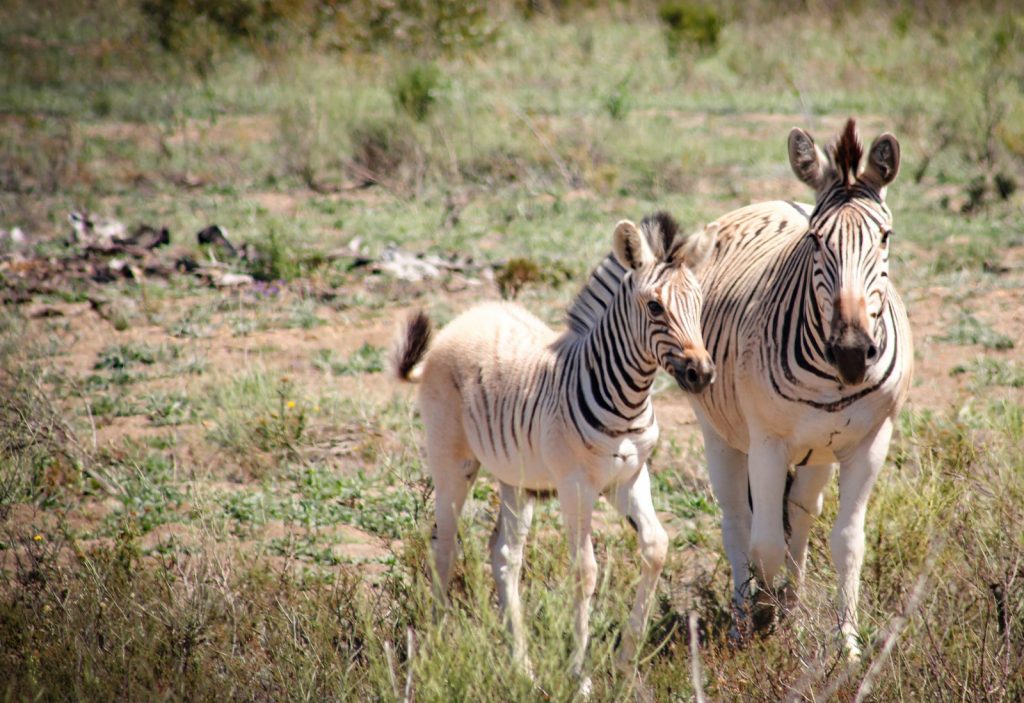A rare Rau quagga was born at the Vergelegen wine estate in Somerset West, Western Cape on 14 December. (Vergelegen)
A rare Rau quagga was born at the Vergelegen wine estate in Somerset West, Western Cape on 14 December. Native to South Africa, the Rau quagga, is named after Reinhold Rau who founded the quagga project and is a rare zebra sub-species.
Speaking to the Mail & Guardian, Eben Olderwagen, the environmental project manager at the 323-year-old estate said that quagga went extinct over 100 years ago. The sub-species bred on the estate are selectively chosen from a founder population of Southern Plains zebras to retrieve the genes responsible for the quaggas’ characteristic fading striped patterns and colour.
Quagga were shorter and stockier than Southern Plains zebras, with a pale brown hide and black markings, unlike the white hide and black markings of other zebras. They usually have stripes on the head, neck and front portion of their bodies only.
 Is the new Rau quagga, a quagga?( Vergelegen)
Is the new Rau quagga, a quagga?( Vergelegen)
Why breed zebras to look like quagga?
“We are trying to breed the characteristics back so that people can see what the extinct quagga looked like,” he said.
There are about 200 Rau quagga in South Africa and these numbers are so low because it is difficult to breed this particular species, says Olderwagen.
Olderwagen said they hope that the herd at Vergelegen will continue to breed and, after about two years, selected animals will be exchanged with others in the programme. This will prevent in-breeding and reinforce the quest to breed Rau quagga as near as possible to the original species.
“This project is significant because of the historical value in the sense that the quagga was indigenous to South Africa and is extinct, and here we are now breeding an animal back that looks close to that species, even though it is not the exact animal genetically”.
“It is for educational purposes, for groups and school children to see what the quagga looked like” he said.
“The other reason this project is so significant is the research value, to show what can be done naturally when people make the effort,” said Olderwagen.
 (Vergelegen)
(Vergelegen)
Reviving an extinct species
In 1883, at the Amsterdam Zoo, a quagga mare died and it was later realised that she was the last of her kind. The quagga’s extinction is attributed to the “ruthless hunting” and een “planned extermination” by colonists. Secondly, the confusion caused by indiscriminate use of the term “quagga” for any zebra, prevented “last-minute efforts” to save the quagga from extinction, says a statement from the estate.
“There is no laboratory work or artificial insemination. Everything is done naturally,” said Olderwagen.
The estate said the arrival of the healthy young foal is a milestone for the ambitious project. It was initiated by a dedicated group of conservationists in 1987, to breed an animal that resembles the quagga as closely as possible thanks to DNA and selective breeding.
Olderwagen said “this youngster appears very relaxed and has been accepted as one of the herd. It has grown about 15cm taller in a month and has been spotted nibbling lucerne, in addition to suckling from its mother”.
Lesego Chepape is a climate reporting fellow, funded by the Open Society Foundation for South Africa.